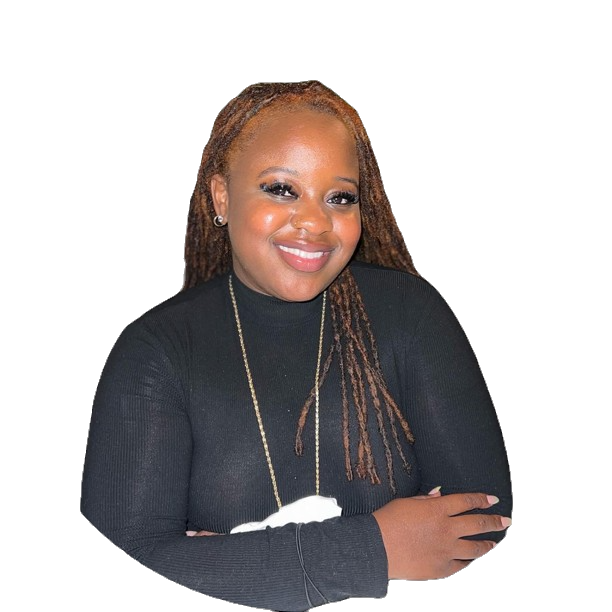Reimagining the Interview: A Mindset Reset for Leaders
- Quamina Belgrave

- Sep 23
- 4 min read
Updated: Oct 21

The idea of a “Great Lock-In” has been buzzing this year, not just about work but about how we’re all reevaluating priorities, stability, and growth. As summer winds down, September naturally feels like a reset point. It’s a season to recharge, refocus, and set intentions as we head into the final stretch of the year, whether that means preparing for new opportunities, leveling up in your current role, or reimagining your next move.
This summer, we explored the power of being clear on your job standards and personal brand. Think of it as your blueprint, the guide you return to when it’s time to reset during your job search. Once that blueprint is in place, the next step is bringing it to life by weaving your story and strategy into the interview.
Now, let’s talk about interviewing. For leaders, interviewing isn’t new territory. You’ve heard the standard tips: research the organization, dress ‘professionally’, treat the interview like a conversation. Those fundamentals haven’t changed, even though the market has become more competitive. What has changed, and what matters most now, is your mindset and strategy. The leaders who stand out are those who approach interviews with clarity, confidence, and alignment, using the moment not just to answer questions but to demonstrate skill, vision, adaptability, and the ability to connect their story to what’s ahead. That mindset means walking in with a solution-oriented approach that drives an organization’s initiatives rather than simply being a “yes” person, the one who says, “I can do that”.
An interview is more than a conversation about your qualifications. It’s your opportunity to connect with the interviewer/hiring manager by articulating how you will generate repeatable success to achieve their organizational goals while enhancing their culture, which expands beyond the job description. At the same time, it’s your chance to evaluate whether their priorities and values align with your own. All interviews are two-sided, and you have the choice. With that lens, let’s look at three interview tips reframed with the mindset shifts that will help you stand out.
Do your homework → Show strategic thinking. Review the organization’s website to understand its values, mission, and recent headlines, and study the job description, but don’t stop there. Look at the bigger picture: Who are their key partners, clients, and decision makers? What are their biggest successes, current goals, and potential challenges for someone in this role (know the market)? Who are the team players (executive leadership, board members, lateral peers)? Go further by connecting with people in similar roles or organizations to gain perspective on what’s valued.
Then, use the interview to demonstrate your value proposition. Share examples of how you’ve solved similar challenges and achieved results, and ask thoughtful questions that position you as already envisioning yourself in the role. When done well, this approach not only showcases your preparation and strategic mindset but also builds rapport, helping the interviewers picture you contributing to their success.
Treat it like a conversation → Read the room. Interviews should feel like conversations, and your responsibility is to connect the dots: show how your leadership, experiences, and vision align with their goals. Speak with confidence and conviction.
But don’t get so locked into your talking points that you miss what’s happening in the moment. Pay attention to the interviewer’s body language (nodding, leaning forward, crossed arms), tone, follow-up questions, and overall engagement. Use active listening, and when needed, restate what you heard to confirm shared understanding. Ex: “What I’m hearing is that leading change across departments has been a challenge. Did I capture that correctly?”
And if you get stumped by a question, don’t panic. It’s perfectly okay to pause and say, “That’s a great question. Do you mind if I take a moment to think about it?” Some interviewers are great “chess players” and hard to read. Throughout the interview, stay authentic by using language and examples that reflect both your professional expertise and your personal “why”. Remember, you’re also assessing if their team culture, leadership style, and pace align with you and/or your career goals.
Practice makes perfect→ Practice with purpose. Practice to prepare, but not to memorize scripts. The goal is to sharpen how clearly you tell and know your story to be fully present. Create 60-second, 2-minute, and 3-minute versions of your story. For each one, highlight what matters most to you and resonates with the organization: your abilities, impact, and decision-making process.
A useful framework is the STAR method (Situation, Task, Action, Result) to give your answers structure and impact. Try this frame: This was the project I led. Here’s how I approached it. This was the outcome. This is what I learned, and here’s how I’ve applied it since. Always bring it back to measurable results. Whether it’s money saved, time gained, or growth achieved, numbers turn stories into proof, and proof builds credibility (aka ‘value’).
Finally, practice and refine your story with trusted colleagues or friends and ask for feedback. Questions like Was I clear? or Did my story land? can help improve delivery. The more you rehearse, the more natural and authentic your stories will feel in interviews.
At the end of the day, interviewing isn’t about checking boxes; it’s about connection, clarity, and credibility. The preparation and mindset you bring into the room shape how others see you, but just as importantly, how you position yourself in the opportunity. Do the prep, bring your authentic personality, and practice with intention so you can show up with clarity and confidence. Then stay curious, listen actively, and demonstrate your value, letting the conversation unfold from there.





Comments